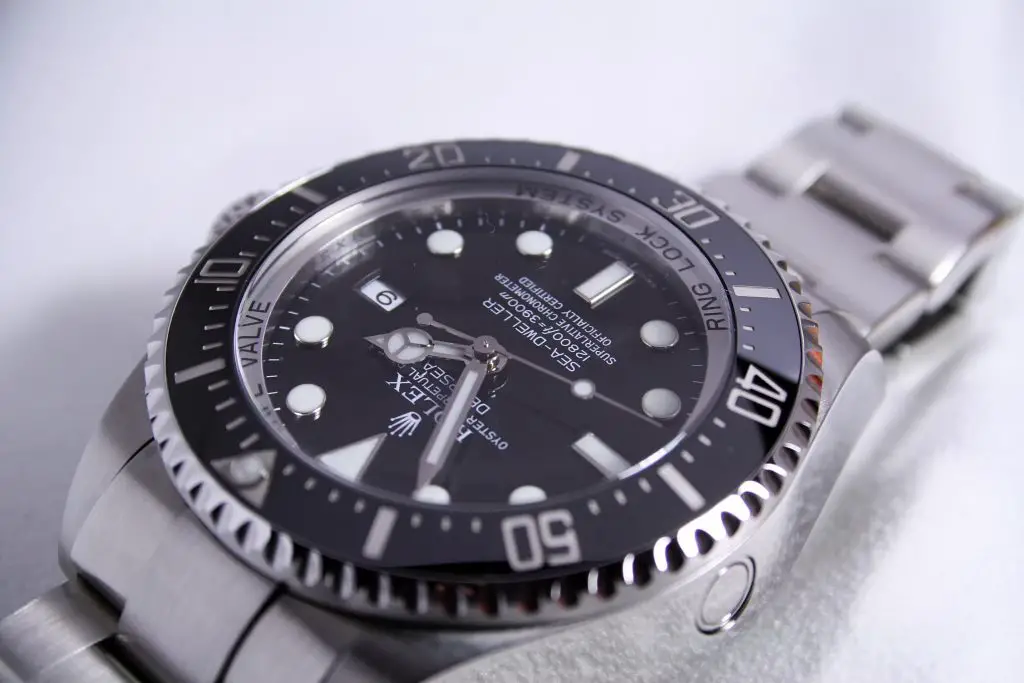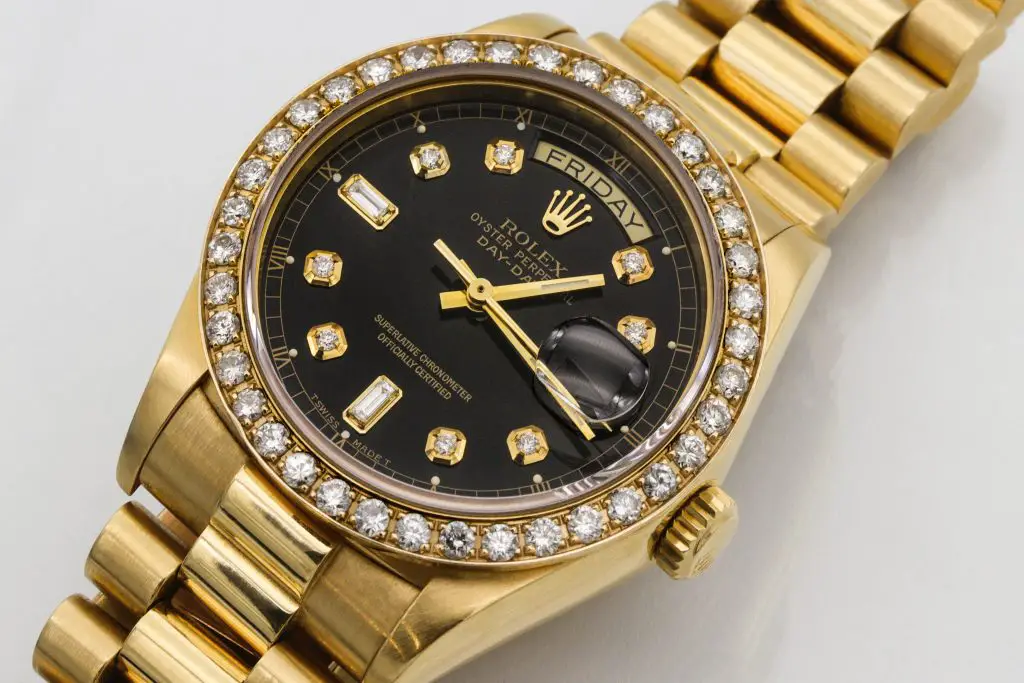One of the worst things that can happen to your prestigious Rolex watch is to scratch it, especially if you bought the timepiece with the intention of selling it down the line. You might wonder; do scratches devalue my Rolex?
A small scratch will have a minimal impact on the value of your watch. You can expect about a 5% decrease. However, larger scratches can heavily influence the value. You’ll either have to sell a watch with large scratches or you’ll have to polish it, both leading to a significant decrease in value.
How much a scratch devalues your Rolex will heavily depend on the severity of the scratch. Small scratches don’t have nearly as much impact as large and deep scratches. But if you do find yourself in a situation where you scratched your Rolex, keep on reading! In this article, we’ll dive deeper into how much of a decrease you can expect and what to do now!

Table of Contents
How Much Do Scratches Devalue A Rolex?
Slight scratches on the case and bezel can lead to a minor decrease in price. Scratches on the crystal can lead to a 10% decrease in value. How much your watch is devalued is ultimately up to the severity of the scratches.
A scratch on your precious Rolex is the last thing you want. Whether you want to hold on to the watch for the rest of your life or plan to sell it down the line, a scratch can easily ruin your day. Scratches are known to be the lead cause of devaluing a watch, but how much they devalue your timepiece depends on the severity of the scratch and what part you scratched.
Scratches On The Watch Case
The watch case is the part of the watch that protects the inner workings. It’s basically the case of the watch (hence the name). Luckily, the case is one of those parts that doesn’t really devalue the timepiece by much. Scratches here are often not that visible, resulting in about a 5% decrease in value.
However, if you have very deep scratches or even dents, you’ll have to get that fixed. This will be done by polishing the watch, which can result in a dramatic decrease in price. Drops of 50% aren’t unheard of, as polishing your timepiece can alter the original shapes.
Scratches On The Bezel
The bezel is the easiest to scratch. It’s the circle next to your crystal (watch glass) and it’s almost always the part you hit when you accidentally bump into things.
Scratches on the bezel aren’t uncommon, and people know that, so a few light scratches here won’t lead to a dramatic decrease in value. You can expect anywhere from a 1-10% decrease. However, if you have a few dents or deep scratches, there could be a need for a new bezel. This can lead to about 60% less value.
Scratches On The Crystal
The crystal is the glass-like piece that covers the dial. Most commonly found in luxury watches, the crystal will be a sapphire crystal. Although sapphire crystals are extremely sturdy, they can still scratch. However, nicks and dents are more common here.
Scratches, small nicks, and small dents on the crystal can lead to a 5-10% reduction in value. However, a sapphire crystal can also completely shatter. When that happens, you’re looking at a reduction of up to 70%. A shattered crystal will need to be replaced, so you can imagine the decreasing value here.
Scratches On The Bracelet
The bracelet is the last part we’ll discuss. Just like the bezel, the bracelet is one of those parts that is hit the heaviest. After all, the bracelet makes up for a large portion of the timepiece, so when you accidentally bump into something, chances are the bracelet is hit.
Scratches on the bracelet can lead to a 20% decrease in value. Of course, this all depends on the severity of the scratches. Simple wear and tear won’t run you as high as a chipped or broken bracelet.
Do Rolex Watches Scratch Easily?

Rolex stainless steel watches scratch easier because they’re made out of an alloy (904L) with added corrosion resistance. This makes the metals slightly softer and more prone to scratches. The same is true for their golden watches.
So the typical Rolex watch is made with a slightly different type of stainless steel that scratches easier. But why is that? Well, there is of course the added resistance to corrosion, but it kind of seems like solving one negative aspect by creating a more likely-to-happen negative aspect.
Most think that Rolex does this so that they can easily detect fake watches. Rolex watches are copied every day, and by using this specific alloy, a Rolex dealer can easily pick out the fake ones.
Aside from detecting fake ones, the 904L alloy also shines a little brighter, making for a more flashy watch.
In the end, the use of this alloy does mean that Rolex uses a softer type of stainless steel that’s more prone to scratches. Now, this means that all the stainless steel parts of the watch are more prone to scratches. The sapphire crystal used is still top-notch and will be difficult to scratch.
How Do I Stop My Rolex From Scratching?
Scratching your timepiece happens every now and then. It sucks, but it just happens. The obvious answer is to just be ‘more careful’, but we all know that when you’re wearing a watch for a long time, you will just hit something with it at least once.
Luckily, Rolex watches are no mass-produced, low-quality watches. They are made from great materials, but like any other watch, they can scratch. Aside from being ‘more careful, here are some more tips to avoid scratching your timepiece!
- Don’t wear your Rolex when doing household tasks
- Don’t wear your Rolex when doing outdoors activities
- Store your Rolex inside the box it came with when you’re not wearing it
- Don’t wear other bracelets on the same arm you’re wearing your Rolex on
- Avoid extreme temperature changes
What To Do When You Scratch Your Rolex
Unless you plan on selling your watch for a profit, it might just be best to do nothing. Signs of wear and tear make up the personality of your watch, and as long as you don’t have a chipped watch or one with deep scratches, there really is nothing to worry about.
If you’re not a fan of the small scratches on your watch, though, you can always decide to have it polished. Polishing is a process that removes the scratches by removing a small layer of the metal (you can read more about polishing and what it is by reading this article!)
Be wary, though, that if you ever plan on selling the watch (for a profit), that you should NOT polish the watch. Polishing devalues the watch because it alters the original shapes, hurting the authenticity of the watch. Rolex watches with wear and tear are sold for much more than Rolex watches that have been polished.
